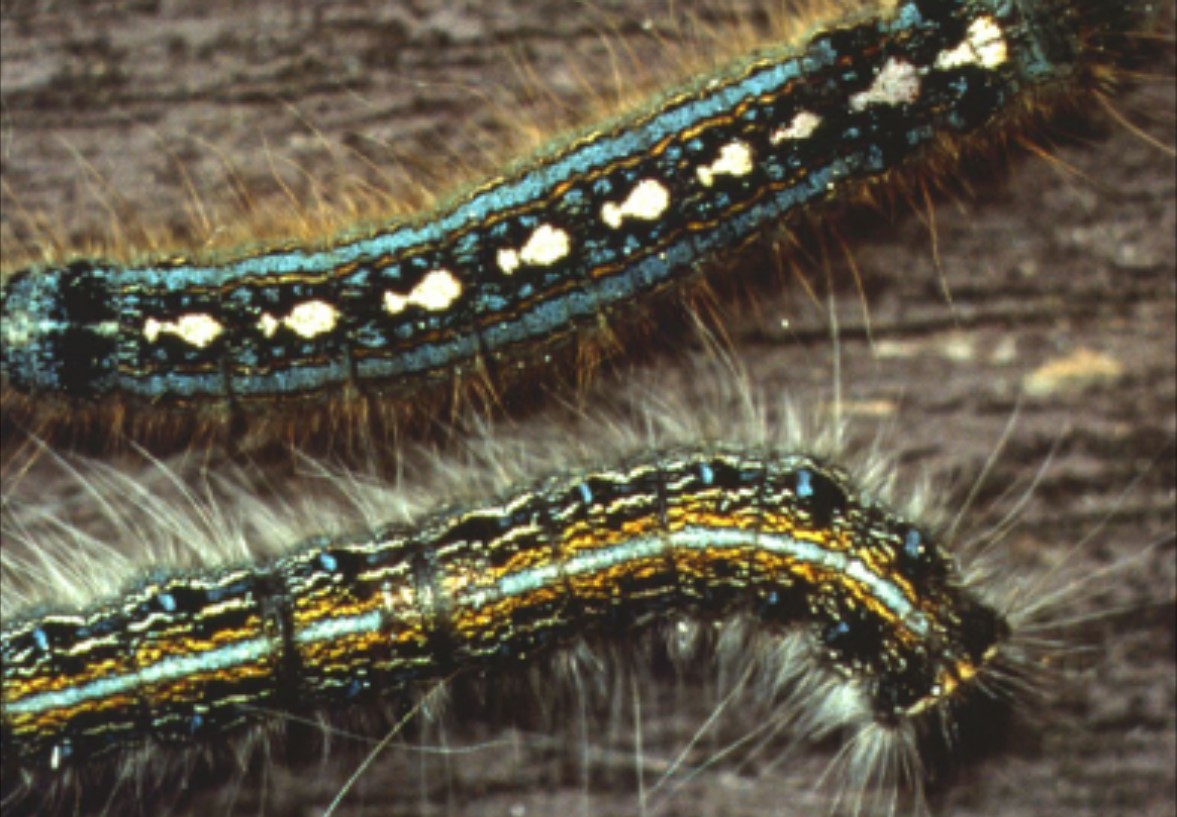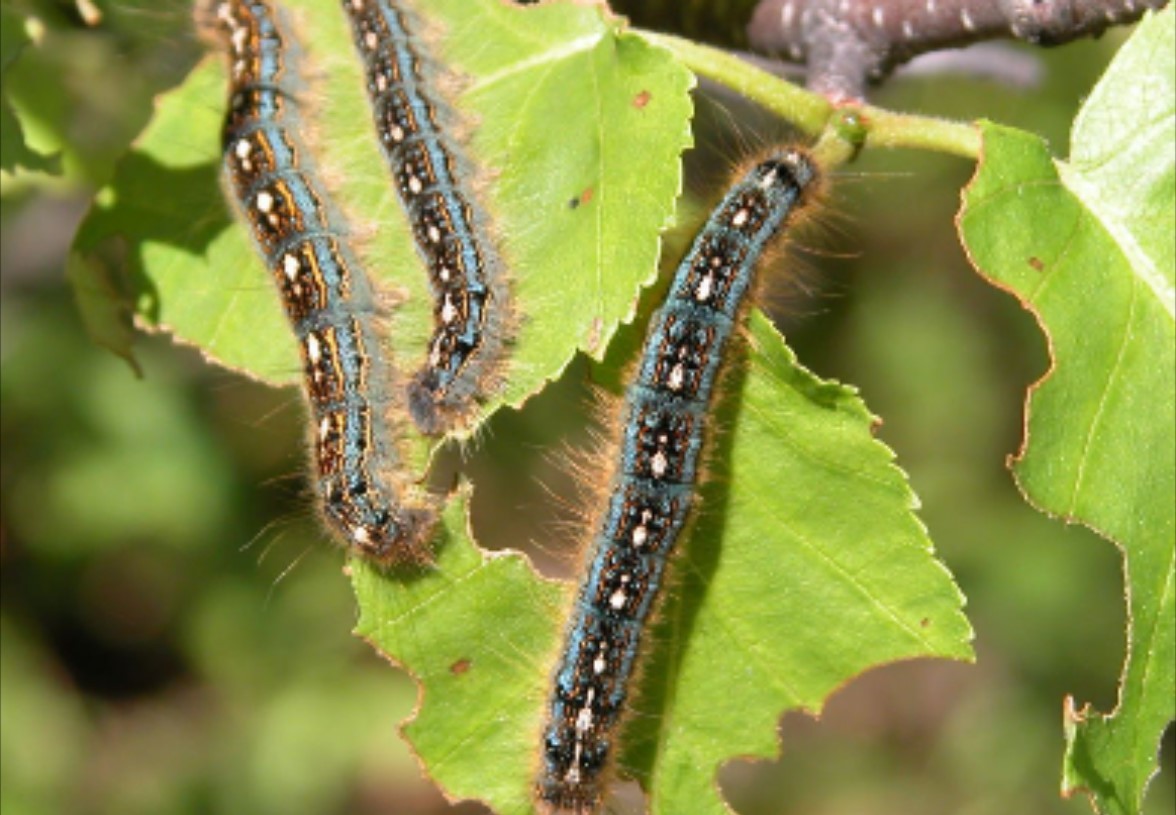Forest tent caterpillar outbreaks occur approximately every 10 years, usually lasting three to six years. Feeding damage ranges from a light thinning of the tree top to trees completely stripped of their leaves.
The caterpillars (larvae) prefer trembling aspen but will feed on various other broadleaved trees and shrubs. When starvation threatens, they may also feed on conifers.
Eggs are laid from July to early August. They develop into larvae within three weeks. These larvae over winter in the eggs and emerge in spring. Emergence coincides with bud development on the trees. The tiny caterpillars feed openly in colonies on the unfolding leaves. After five to eight weeks of feeding starting in June to mid July, the caterpillars spin silken cocoons. The pupal stage is normally 10 days. Adults emerge in mid to late July, mate and lay eggs. The adult moths are active fliers and can be carried for several hundred kilometres (several hundred miles) on air currents.
Following two or more years of severe feeding, there is a general decline in tree health, including twig and branch dieback. After three or four consecutive years of being stripping of their leaves, trees become weakened and are more susceptible to insects, such as wood borers and stem disease.
Sign and Symptoms
Forest tent caterpillars feed on the leaves of the host plant.
Control- What you need an arborist to do
Pesticide
- Bacillus thuringiensis var. kurstaki (Btk) can also be used to control Forest Tent Catepillars. Btk is a selective biological insecticide which controls lepidopterous larvae (caterpillars).


Tree Health Issues
Wondering about costs?

